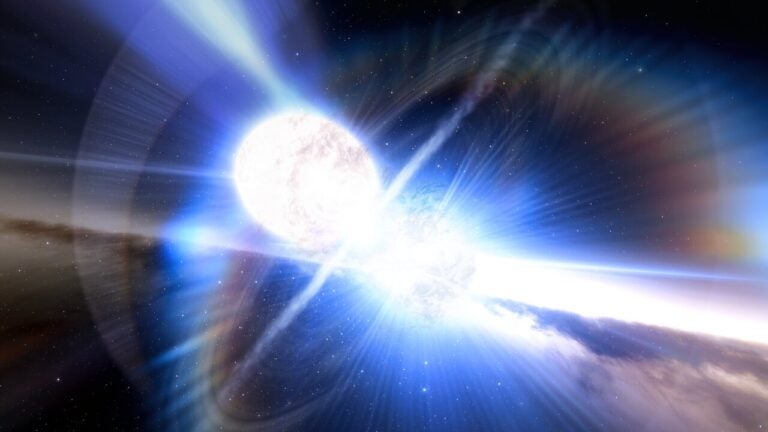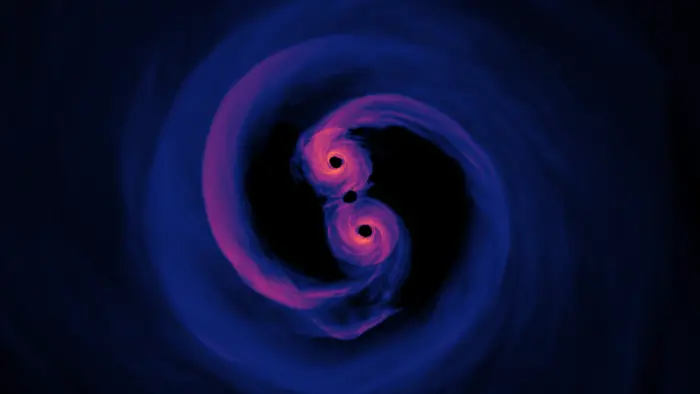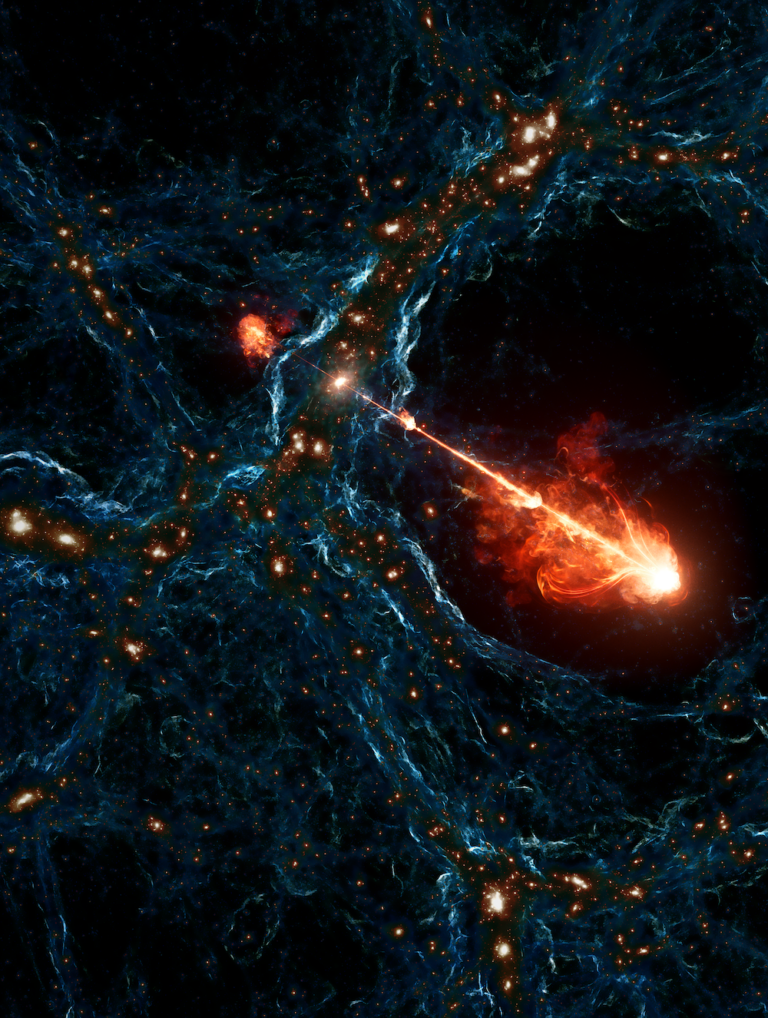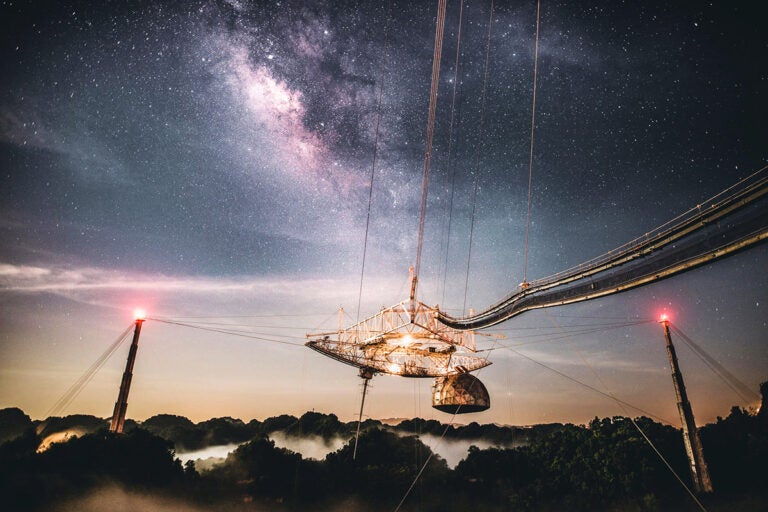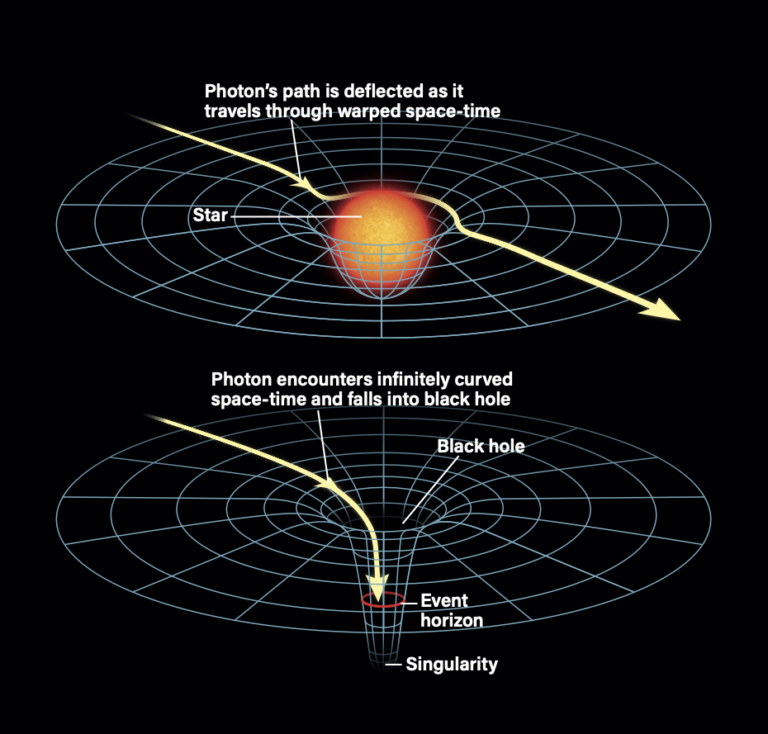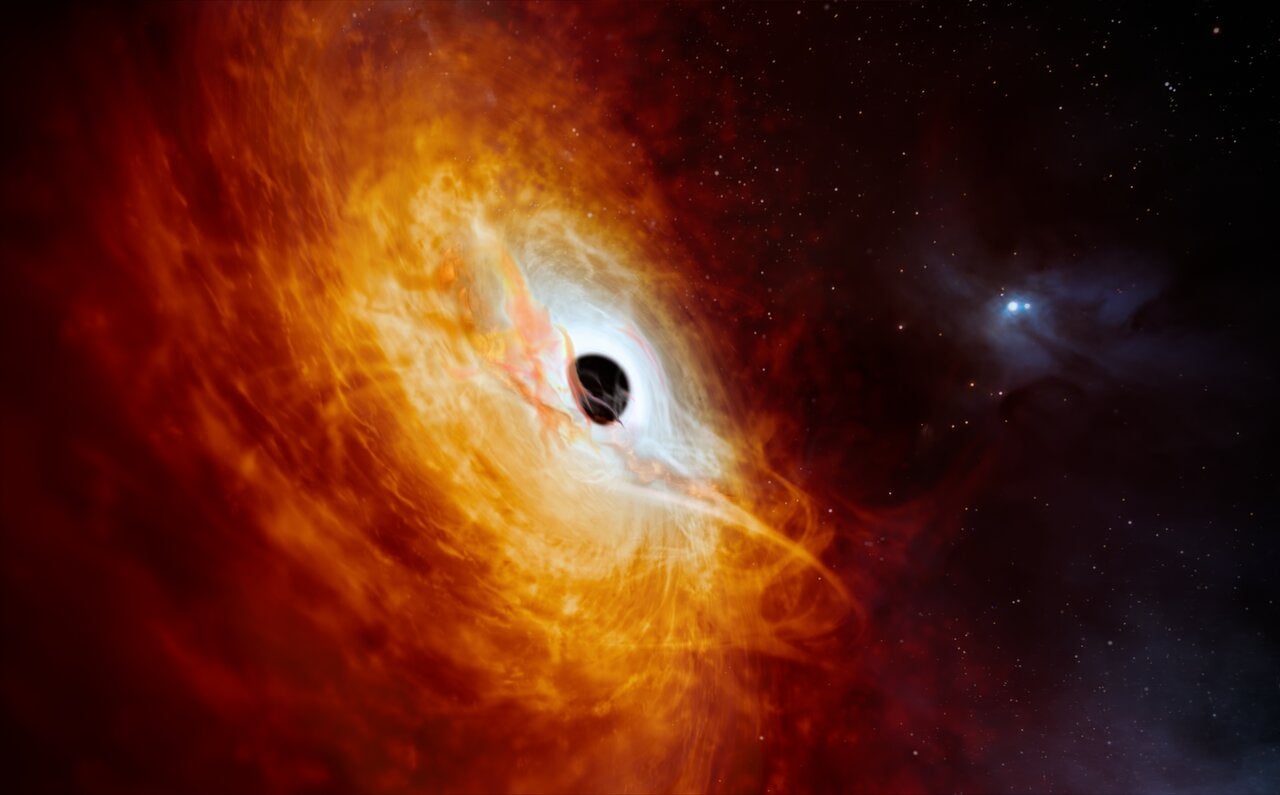
Astrophysicists just spotted the brightest and fastest-growing supermassive black hole — and it turns out, it was hiding in plain sight for decades.
Dubbed J0529-4351, the quasar was so bright that it was first dismissed as a star. Described in a paper published in Nature Astronomy, the quasar has a mass of 17 billion Suns and it’s still growing. The black hole is consuming the equivalent of one Sun per day, shining brighter than 500 trillion Suns and making it the brightest known object in the universe.
“All this light comes from a hot accretion disk that measures seven light-years in diameter — this must be the largest accretion disc in the universe,” said study co-author Samuel Lai, a Ph.D. student at the Australian National University (ANU), in a press release.
The universe’s brightest objects
Quasars are the brightest objects in the cosmos, and they owe it to their voracious appetites. As gas and dust are pulled into the supermassive black holes, it forms a swirling accretion disk that spews out electromagnetic radiation, glowing as the material undergoes friction and other forces on its way toward the center. These objects are so bright that they can emit more light than the entire Milky Way Galaxy.
Overlooked for decades
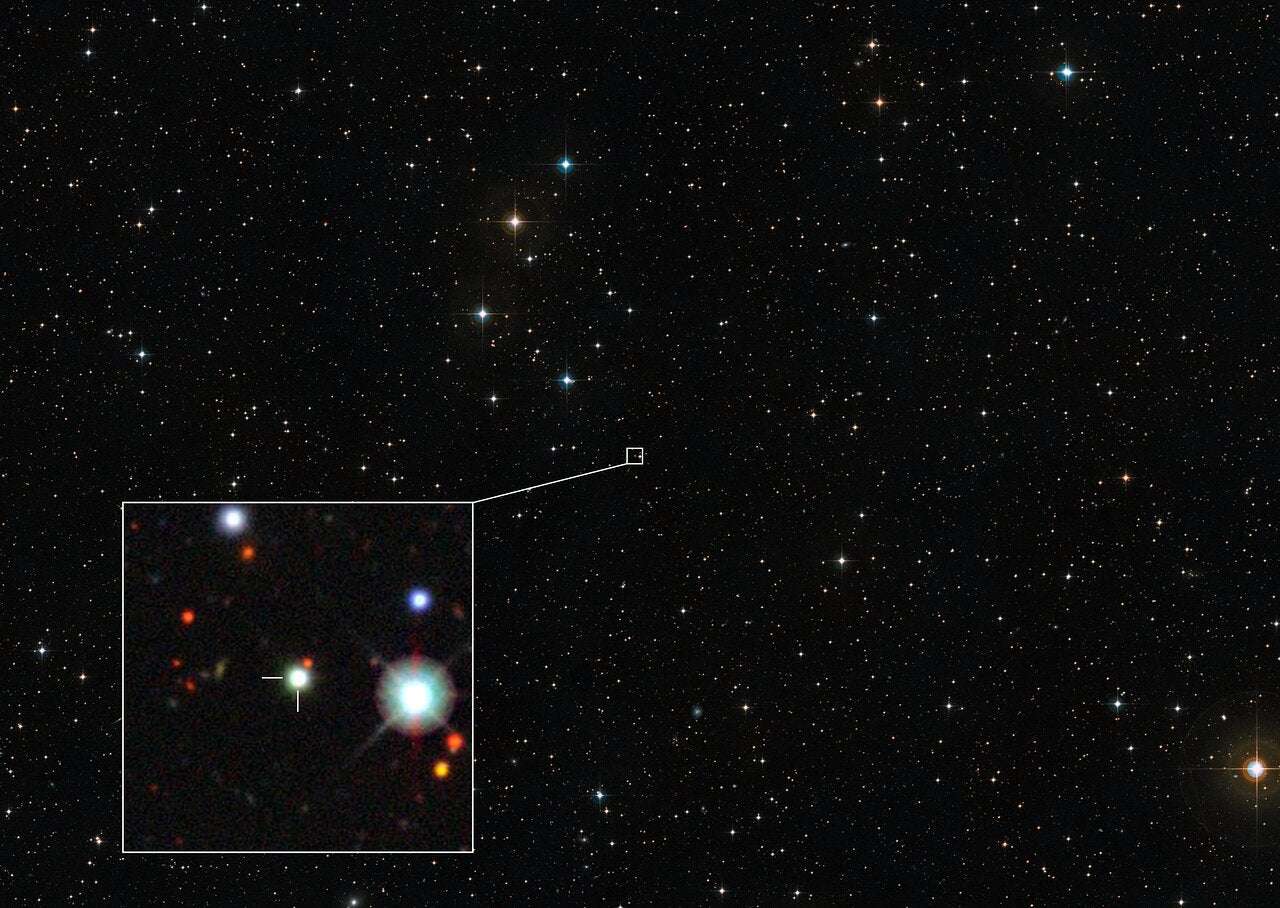
J0529-4351 was first noted in a sky survey in 1980 but was not categorized as a quasar until last year. Automated analysis of data from ESA’s Gaia satellite instead earmarked the quasar as a star because it seemed too bright to be anything else.
Researchers using the ANU 2.3 Telescope in Australia later discovered J0529-4351 was a quasar in 2023. Follow-up observations with the X-shooter spectrograph on the European Southern Observatory’s Very Large Telescope in Chile confirmed the object’s nature.
Finding and studying quasars brings researchers closer to understanding how galaxies and their supermassive black holes evolved. The team plans on further studying J0529-4351 with GRAVITY+, an upgrade to the Very Large Telescope’s interferometer, which will measure the mass of distant black holes with astonishing accuracy.


